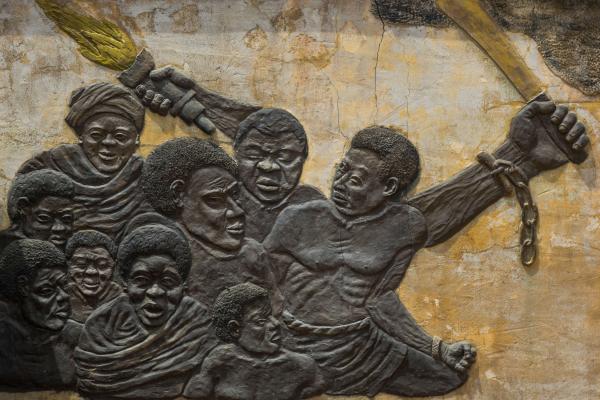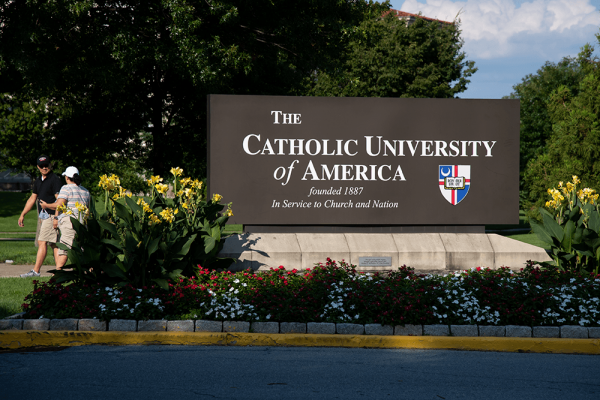I am a product of white evangelicalism.
I was raised in it and worshiped within the walls of its sanctuaries. As a young Christian, I learned its language and preached under the bright lights of its stages. I was educated in its institutions and formed in its church buildings. I navigated this white evangelical world, hoping to carve out an ecclesial space to minister.
But I soon found there was no room for my body — my brown, Indian body — in the Christian imagination of white evangelicalism. My story, and the story of my people in the United States, was peripheral to the narrative and mission of the church. “Asian-ness” (in all its forms) was not welcomed as a contribution to the body of Christ. Instead, it was held up as an example of scriptural manipulation and theological relativism. Our doctrine was corrupt and biased. Our experience did not hold the authority to make claims about Christian belief.
The truth is I could never achieve the ideal maturation of white evangelical formation because I could not become white. That is, I could not fit into the rhythms and structures of white evangelical faith because I could not share in its communal experience. To achieve this ideal “maturation,” to fit within the space made for me in white evangelicalism, it would require the erasure of my particularity, my experience, and my ethnicity.
Surely, no one mandated that I become white. This was not written into bylaws, life guides, or employment contracts. But the unspoken expectation in these white evangelical spaces was that my brown embodied experience would not disrupt the white evangelical narrative imposed on Asian America.
This oversimplified narrative makes absolute claims about “model minority” assimilation, perpetual foreignness, and what constitutes faithful Christian practice. It does not attempt to accurately portray Asian America, but rather it tokenizes the Asian experience by setting the terms of public and religious discourse about race, religion, and politics. Ultimately, this narrative keeps spiritual power located among a cohort of white evangelical leadership while simultaneously silencing those who challenge this reality.
Five years ago, my participation in white evangelicalism became unbearable. As anti-Asian violence increased, issues of systemic injustice came to the forefront of society, and evangelicals united themselves with Donald Trump, I witnessed white evangelical leadership double down on ecclesial systems of segregation while denying the experience of marginalized communities. A choice became clear: I could no longer contribute to Christian institutions that sought to erase the trauma and oppression of marginalized communities while silencing those who sought to resurrect and bear witness to these wounds.
I did not know what I would find beyond the walls of the dimly lit white evangelical sanctuaries I inhabited. But once my eyes adjusted to the world around me, I soon found a bright, growing movement of Asian Americans, many within evangelicalism, writing a new public narrative of Asian American life and activism.
These Christians are proclaiming the gospel from their Asian-located bodies and through the particularity of their experience. They are preaching words of lament, teaching their histories, addressing the trauma of their communities, collectively raising their voices in protest, and sharing their nuanced, complex stories of adoption, immigration, and second-generation experience. In all, they are prophesying hope in a dark world by working toward justice through common ground and redeeming tacit difference as a beautiful reality in the body of Christ.
The voices and stories shaping a new understanding of Asian America hold in tension a theology of celebration and a theology of suffering. As Asian Americans work toward a new public narrative, they are elevating not only the joy of their communities but also their lamentations. As Asian American leaders bring this perspective into their engagement with issues of race, religion, and politics, their work is informed by both knowledge and experience — with both an intellectual understanding of our society’s systemic issues and the first-person experiences of their consequences.
This work of crafting a new narrative for Asian America takes various forms across many locations. It is not linear or systematic, but rather involves the relational work of changing a collective imagination of Asian Americans through both education and experience. Like any story, asserting a new narrative for Asian America requires engaging mind, body, and soul.
Organizations and programs like Lived Theology in Asian America, Stop AAPI Hate, the Asian American Christian Collaborative, and Virulent Hate all shape this collective narrative by disseminating resources on the intersectional oppression and struggle of Asian communities while also placing statistics and surveys in the context of the lived experiences of Asian Americans.
Scholars like Melissa Borja, Jonathan Tran, Jane H. Hong, and Helen Jin Kim elevate histories of Asian America that complicate our understanding of religion in America. Others like Russell Jeung, Kwok Pui-lan, Gale A. Yee, Michelle Ami Reyes, David C. Chao, and Amos Young are proposing distinctly Asian American approaches to activism, feminism, biblical interpretation, and Christian theology. These scholars contribute to this new narrative by asserting Asian American history and theology as a fruitful contribution to the Christian faith, not a contradiction or betrayal of it.
Asian Americans are also elevating stories of their lived experiences through art and social media. Makoto Fujimura testifies to the complexities of Asian American life through art. His work evokes deep emotion, which allows his audience to not only see Asian experiences but also feel them. Kevin Wilson, known online as @CrossCultureChristian, has leveraged a different creative outlet. Over the past year, Wilson has cultivated an international audience through his viral TikTok videos where he brews chai, reflects on the Christian faith, and preaches stories of hope at the intersection of faith and ethnicity.
The work these organizations, scholars, and ministers are accomplishing across the United States contributes to the growing presence of Asian Americans in conversations surrounding racism, injustice, and cultural polarization. By identifying these issues as inherently pastoral, prophetic, and theological, these Asian American leaders have unequivocally affirmed that the gospel speaks to the particular, socially located experience of those who bear the image of God.
This task of elevating a new public narrative of Asian America can only be accomplished if Asians across the United States embrace the places they are called to share their stories. The proclamation of these stories takes many forms, as God has gifted us each differently. But there is no question: These stories are a blessing to our world.
Over time, proximity to these stories will cultivate both empathy and humility among those willing to draw near to listen. As more Christians begin to gather across lines of difference and enter this shared and sacred space, I believe our communities will move toward a type of sacrifice that effects meaningful, longstanding change and honors the complex narrative of Asian America today.
Got something to say about what you're reading? We value your feedback!







